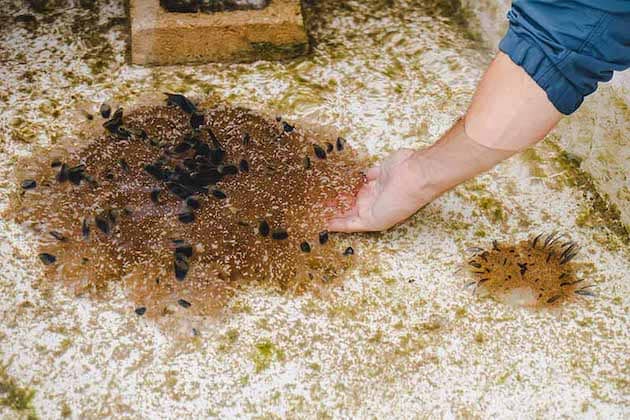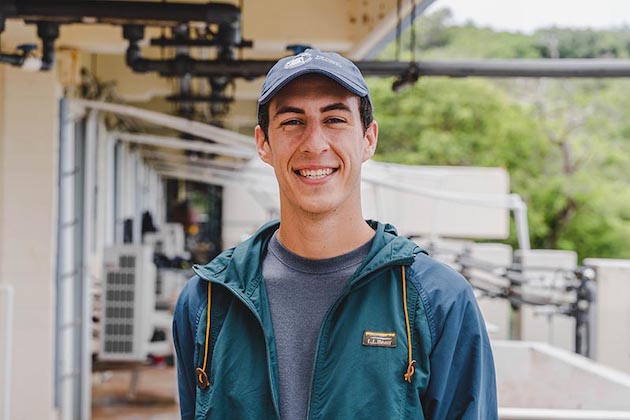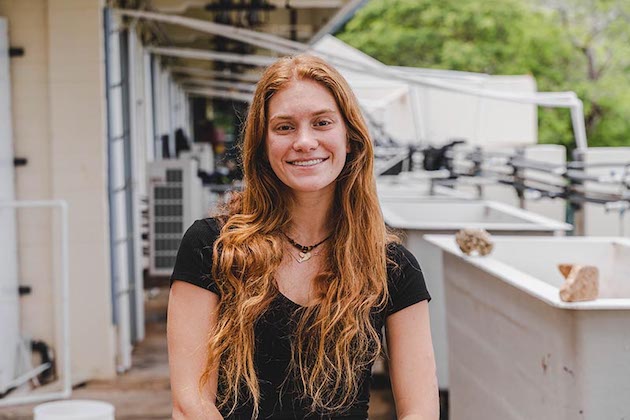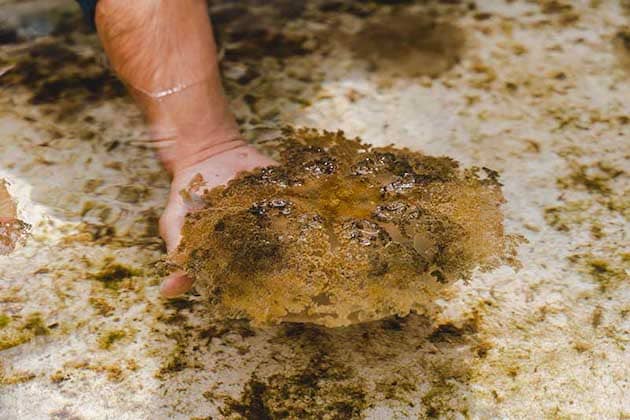Graduate students publish paper on Guam's upside-down jellyfish populations
Graduate students publish paper on Guam's upside-down jellyfish populations
Graduate students publish paper on Guam's upside-down jellyfish populations
9/10/2022

A new study by University of Guam researchers has found that two populations of upside-down jellyfish (Cassiopea ornata) found in Guam waters have different appearances not because they are different species, but because of their environments.
The study, which was funded by the university’s National Science Foundation EPSCoR grant, was published in May in Zoomorphology, a peer-reviewed journal that focuses on the form and structure of invertebrates and vertebrates.

“Upon doing a little genetic work, we determined that they were the same species. So instead of it being species-level morphology differences, we determined that it was environment-level morphology differences,” said lead author Colin J. Anthony, a UOG graduate student studying biology. “The environments we pulled them from are very different. Cocos Lagoon has turbid, sediment-laden water, and the water in Piti Channel is very clear.”
According to the study, it may be possible that these different environments affect the way these jellyfish acquire sustenance.
Upside-down jellyfish spend most of their time with their bells resting on the seafloor of shallow, coastal waters. By lying upside down, the jellyfish expose the photosymbiotic algae living inside their arms toward the sun and can then sustain themselves off the byproducts of the algae and capture zooplankton for additional energy to grow.
Photosymbiosis is a type of symbiotic relationship between two organisms in which
one organism is capable of photosynthesis.

“If they’re in a little more turbid or muddy water, they may rely more on their hunting skills and releasing their stinging structures and using heterotrophy to feed versus if they’re in clearer water, they would use more photosynthetic capabilities,” said co-author MacKenzie Heagy, a UOG graduate student studying biology.
Studying upside-down jellyfish is important for several reasons: Because they are close relatives of corals, which also share the same bond with photosymbiotic algae, upside-down jellyfish are being used as a model to study corals without having to harm coral populations.
Upside-down jellyfish can also serve as environmental indicators for nutrient pollution and microplastics. Additionally, some species are considered invasive, with the potential to impact the use of waterways when congregating in large numbers.
A community effort

Locating the Cocos Lagoon population was achieved by UOG Marine Technician II Johnathan A. Perez, who grew up seeing them at his aunt’s house in Malesso.
“The only way we found the populations is through people who have lived here their whole lives,” Anthony said. “They knew they were here, but they hadn’t been scientifically documented. We owe finding these populations to our friends who helped us and grew up here.”
Heagy said that she is grateful for being able to study in an environment that has been encouraging when it comes to conducting research.
“This is the perfect place to do this work,” Heagy said. “There are so many resources and we’re so lucky to be here. Guam gives you so many resources and so many questions to ask and so many things to think about. The Marine Laboratory and EPSCoR have given us so many opportunities to ask questions.”
